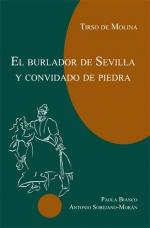|
This section contains 4,203 words (approx. 15 pages at 300 words per page) |

|
SOURCE: “El Burlador de Sevilla: A Tragedy of Errors,” in Philological Quarterly, Vol. XXXVI, No. 1, January, 1957, pp. 61-71.
In the following essay, Wardropper presents an in-depth discussion of de Molina's El burlador de Sevilla.
“Todo este mundo es errar.”1
The point about Tirso's Don Juan is, not that he is a profligate, but that he is a deceiver, a source of error. He broadcasts burlas about Spain and Italy. Burlas are contrived engaños, the opposite of veras. In Part I of Don Quixote the knight is the victim of a series of engaños, more or less fateful misunderstandings; but in Part II, especially in the events at the court of the Duke and Duchess, he is the victim of burlas, deliberately engineered misunderstandings. The aristocrats' pleasure, in their casa de plazer, is the fruit of mischief, of la malicia—the Satanic force in the allegory of...
|
This section contains 4,203 words (approx. 15 pages at 300 words per page) |

|


